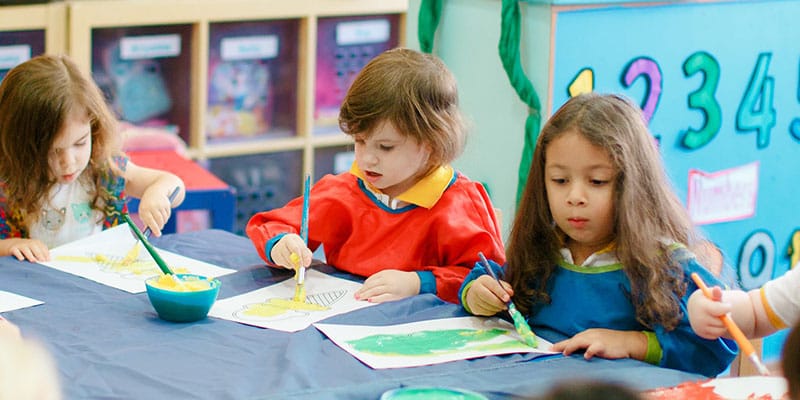
“Every child is an artist” – Picasso
Why is art important in schools?
Art is food for the soul and comes in many different forms, from music, dance, puppetry, painting, and drawing to storytelling and more. The role of parents and teachers is to expose children to a variety of materials so they can create art. If children are given the proper opportunities to develop their creativity through practice, creativity will come more naturally to them.
Art and creative activities develop children mentally, socially and emotionally and have many other benefits for a child’s development.
The following are some of the documented benefits of art for children.
- Making a choice – by choosing what shapes to draw, what colours to use and what size to make their drawings, children are learning how to make a choice.
- Sensory development – art can employ many senses as children mix colours, draw what they see in front of them, feel the materials and squish paint between their fingers. All these make for great sensory activities.
- Fine and gross motor skills – drawing, mixing colours, cutting, controlling a glue stick, rolling, tearing and sticking all require coordination and are fun activities that children want to keep repeating. As children engage in these activities, their motor skills improve.
- Builds confidence – by getting up in front of a group, taking pride in their artwork and showing other people their work and talents, children are given a confidence boost.
- Promotes creativity and builds problem-solving skills – art helps children to think outside the box and develop critical problem solving skills. When your child is encouraged to think outside the box, they will be able to use this skill in other situations too. The more experience they have with a variety of materials and techniques, the more likely they are to try new combinations. According to the International Child Art Foundation, “Research indicates that a child who is exposed to the arts acquires a special ability to think creatively, be original, discover, innovate, and create intellectual property—key attributes for individual success and social prosperity in the twenty-first century.”
- Pre-writing – as babies and toddlers scribble, they are actually improving the way they hold and control a crayon and, as they move on to making shapes, they improve their prewriting skills which helps when the time comes to start writing.
How You Can Help at Home
- Have an “art area” or corner in the house with paper, boards or a variety of materials with drawing tools like pencils, paintbrushes, crayons and paints. You can also add scissors, glue, containers, beads, glitter and so much more so keep it interesting. Every now and then you can add in something new to make it that much more fun for your little one. Set up a space where your child can experiment. Expect and encourage a mess!
- Get your child involved in art programs after school, during the weekends and vacations
- Have fun together- create a scrapbook with pictures, captions and collages and work on fun art projects together.
- Sing and dance together – get the whole family involved and make an event of it!
- Act our stories with props and costumes and encourage your children to act out stories for you too.
“Creativity is contagious, pass it on.” – Albert Einstein



